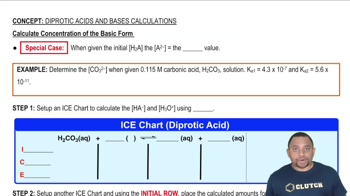Here are the essential concepts you must grasp in order to answer the question correctly.
Half-Life
Half-life is the time required for the concentration of a reactant to decrease to half of its initial value. It is a crucial concept in kinetics, particularly for first-order reactions, where the half-life remains constant regardless of concentration. Understanding half-life helps predict how long it will take for a reaction to reach a certain point, which is essential for various applications in chemistry and pharmacology.
Recommended video:
Reaction Order
The order of a reaction refers to the power to which the concentration of a reactant is raised in the rate law. It determines how the rate of reaction changes with varying concentrations of reactants. For example, in first-order reactions, the rate is directly proportional to the concentration of one reactant, which directly influences the calculation of half-life.
Recommended video:
Initial Concentration
Initial concentration is the concentration of a reactant at the start of a reaction. It plays a significant role in determining the rate of reaction and the half-life, especially in reactions of different orders. Knowing the initial concentration allows for accurate calculations of how long it will take for the concentration to decrease to half its value, which is essential for understanding the kinetics of the reaction.
Recommended video:
Calculate Concentration of the Basic Form
 Verified step by step guidance
Verified step by step guidance

